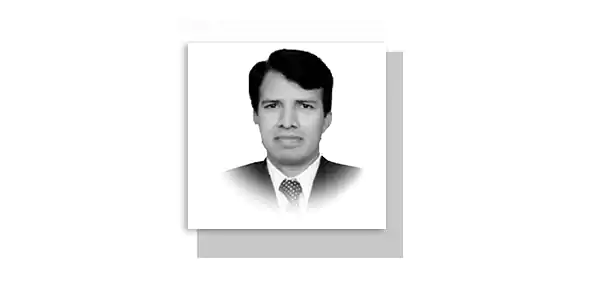FROM the very beginning of the 21st century, India has planned and executed dozens of false flag operations to achieve three main objectives: (a) to defame Pakistan on account of terrorism, while Pakistan unequivocally fought a war against terrorism, (b) to divert the attention of Indian masses from many domestic issues which, otherwise, needed immediate attention and (c) to strengthen the Hindutva ideology for isolating the minorities, especially the Muslims. Some major false flag operations India carried out include the Indian Parliament attack in 2001, the Mumbai attack in 2008, the Pathankot attack in 2016, the Uri attack in 2016 and the Pulwama attack in 2019. In the aftermath of these events, many Indian officials revealed the Indian aims and objectives behind these false flag operations.
In 2023, the former Governor of Indian Illegally Occupied Jammu and Kashmir (IIOJK), Satya Pal Malik, exposed Indian secrets behind the Pulwama attack of February 14, 2019. As a result of this attack on an Indian military convoy in Pulwama area of IIOJK, 44 Indian soldiers were killed while dozens were injured. Immediately after the attack, Satya Pal contacted Indian Prime Minister, Mr Modi who couldn’t satisfy his queries. Indeed, there was Governor Rule in IIOJK at the time of attack and Indian Army was controlling the entire State and its Administration.
The summary of Mr Pal’s finding is that, Indian Government under Mr Narendra Modi had planned this false flag operation utilizing Indian spying network RAW to achieve four main objectives; (i) to win the Indian public support for Modi and BJP for elections 2019, which was successfully achieved, (ii) to defame Pakistan in the eyes of international community as a sponsoring terrorism, (iii), to delay the visit of Saudi Crown Prince Mohammad Bin Salman (MBS) to Pakistan, planned for 15th February 2019 and (v) to create grounds for attacking Pakistan or at least paving way for the conduct of surgical strikes across the Line of Control (LoC). Pakistan, however, very swiftly responded to the Indian so-called surgical strike on February 27, 2019.
Mr Pal believes that Prime Minister Modi and Ajit Doval had same view about the Pulwama attack, since both told him to stay quiet for attaining abovementioned objectives. In fact, disclosures of former Governor show that “how the Indian leadership has habitually used the bogey of terrorism from Pakistan to advance its sham victimhood narrative and the Hindutva agenda, clearly for domestic political gains.” Indeed, the immediate fallout of the Pulwama attack was quite upsetting for Pakistan in connection with the high profile visit of MBS. Pakistan even offered its cooperation in the investigation process. On its part, India launched a massive media campaign to implicate Pakistan and Pakistan-based organizations in the Pulwama attack and created war hysteria among the Indian masses.
This all ended at the Indian Air Force physical incursion into the Pakistani aerial space up to Balakot which was responded by Pakistan by shooting down two Indian aircraft in Nowshera sector of IIOJK. One Indian aircraft fell in Azad Jammu and Kashmir whose pilot was also arrested. From the planning to its conduct phase, India wanted to achieve a political and strategic mileage from the Pulwama attack. Politically, India wanted to tell the world that, whatever is happening in IIOJK is sponsored by Pakistan. Through this strategy, India wanted to obscure its own massive human rights violations in the IIOJK where India has deployed 900,000 troops for the genocide of Kashmiris and rape the women folk of IIOJK.
Strategically, India wanted to prove its military ascendancy over Pakistan and in the broader region of South Asia which Pakistan countered befittingly. The Pakistan retaliation and shooting of Indian aircraft have put India into a humiliating position, with a strategic disadvantage. In order to cover its humiliation, the Indian Prime Minister asked for better equipment and new aircraft like the Rafale, which India later procured from France in 2021. Since then, squadrons of Indian Rafales could not do anything against Pakistan.
Indeed, the Pulwama attack put the Indian military into a strategic disadvantage. It exposed Indian strategy and unfounded accusations, it has been labelling Pakistan. On the other hand, Pakistan today stands at a higher pedestal with a strategically dominating position in and around South Asia. From 2000 to 2019, over a dozen false flag operations were conducted by India and blamed Pakistan and Pakistan-based organizations for all of these. In 2000, India stage-managed a drama of killing 36 Sikhs in IIOJK on the eve of the visit of former US President Bill Clinton. Later investigation proved that RAW was behind the killing of these Sikhs to defame Pakistan. International community has rejected the Indian accusations against Pakistan and the false flag operations; it has carried out since the beginning of 21st century.
While analysing the history of India’s false flag operations, one gets the impression that India considers Pakistan as the last hurdle in achieving the status of a regional hegemon in South Asia. Pakistan demands India to answer the questions raised by former Governor Satya Pal Malik. “It is time India should be held accountable for the actions that imperilled regional peace in the aftermath of Pulwama attack.” Pakistan also expects that the international community should act neutrally and question India for these false flag operations. India must give Kashmiris their right of self-determination and stop persecution of minorities in its own country. Indeed, Modi and the broader Hindutva agenda of India is very dangerous for South Asia in particular and the world in general.
— The writer is Professor of Politics and IR at International Islamic University, Islamabad.
Email: [email protected]
views expressed are writer’s own.










